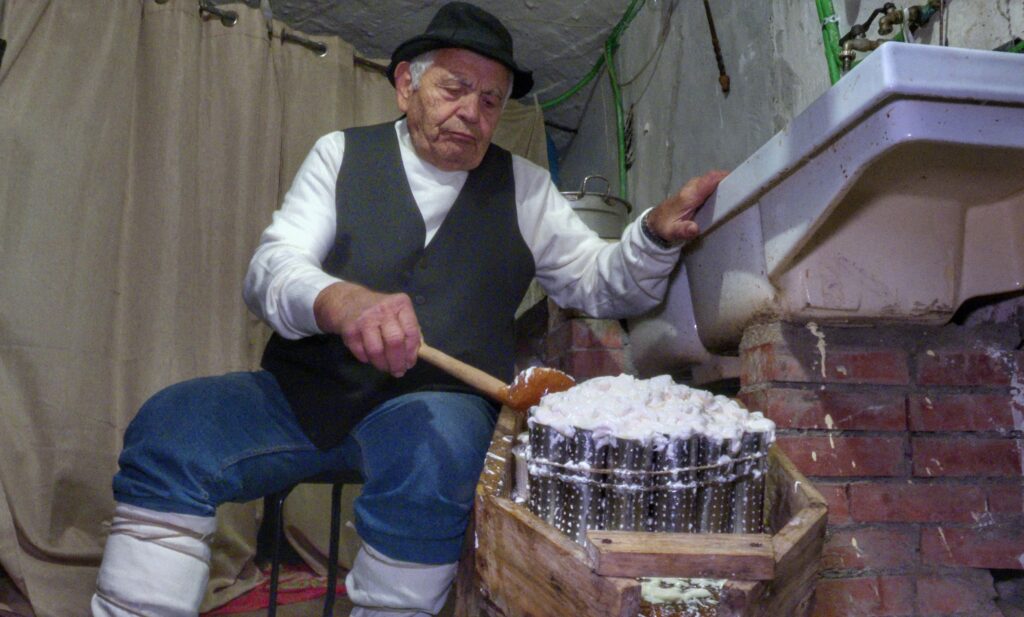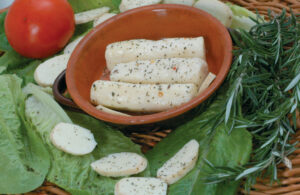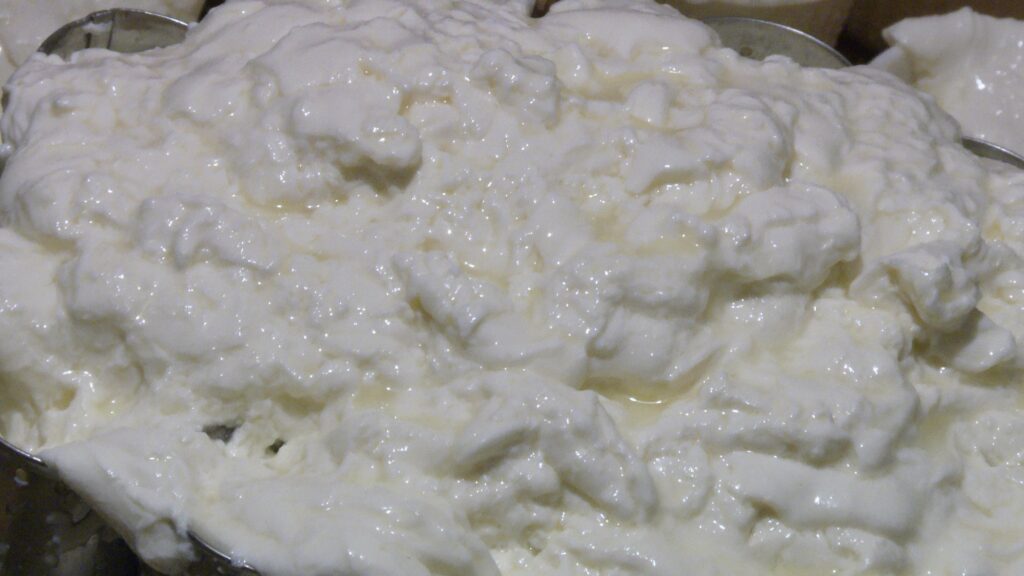
 The name of this cheese derives from the word ‘marzo’ (March) because in the ancient tradition of lower Lazio, marzolino was made from goat’s milk milked in March. In spring, in fact, the animals were led to pasture and all gave birth at the same time; the freshness and abundance of herbs give the milk a unique aroma and flavour.
The name of this cheese derives from the word ‘marzo’ (March) because in the ancient tradition of lower Lazio, marzolino was made from goat’s milk milked in March. In spring, in fact, the animals were led to pasture and all gave birth at the same time; the freshness and abundance of herbs give the milk a unique aroma and flavour.
 Shepherds immediately process the milk, giving it a typically cylindrical shape, and to ensure its preservation they use salt or certain herbs, such as oregano and pimpinella, to which chilli pepper has also been added over time. Marzolino that is eaten at other times of the year is usually less pleasant, also because sheep’s milk and cow’s milk can be added and in this case it loses its typicality. It is quite common to buy cured marzolino or marzolino preserved in oil, but in this case its flavour is more pronounced due to being spicier and saltier. Cured marzolino may sometimes have holes filled with an oil that is very pungent to the taste.
Shepherds immediately process the milk, giving it a typically cylindrical shape, and to ensure its preservation they use salt or certain herbs, such as oregano and pimpinella, to which chilli pepper has also been added over time. Marzolino that is eaten at other times of the year is usually less pleasant, also because sheep’s milk and cow’s milk can be added and in this case it loses its typicality. It is quite common to buy cured marzolino or marzolino preserved in oil, but in this case its flavour is more pronounced due to being spicier and saltier. Cured marzolino may sometimes have holes filled with an oil that is very pungent to the taste.
 In local cuisine it is served as an appetiser, alongside olives in brine and typical cold cuts, but in haute cuisine it is transformed into a froth by incorporating air, which makes this cheese lighter and more pleasant; a marzolina froth can be served with a celery or fennel-based pinzimonio. It is best paired with chestnut honey, which has a pleasantly bitter note that contrasts the fatty, savoury note typical of goat cheeses.
In local cuisine it is served as an appetiser, alongside olives in brine and typical cold cuts, but in haute cuisine it is transformed into a froth by incorporating air, which makes this cheese lighter and more pleasant; a marzolina froth can be served with a celery or fennel-based pinzimonio. It is best paired with chestnut honey, which has a pleasantly bitter note that contrasts the fatty, savoury note typical of goat cheeses.
Photo Credit: ©G.Miele/guidesmart
